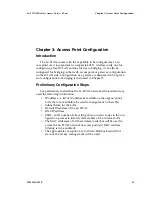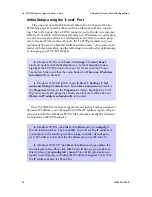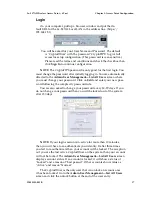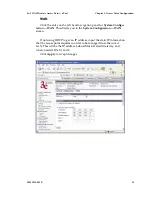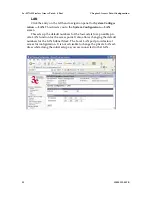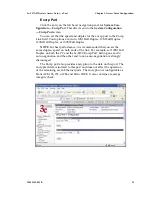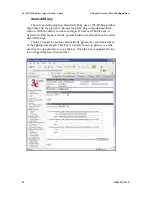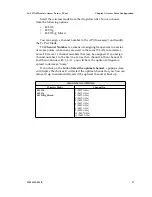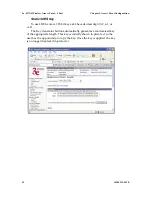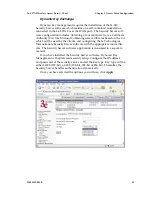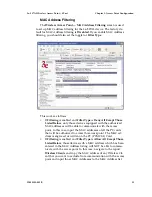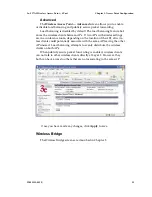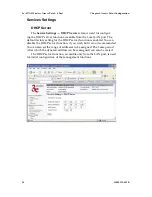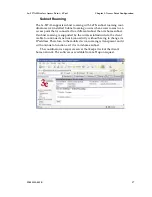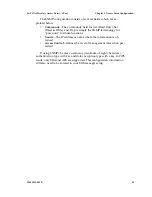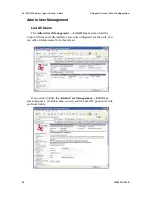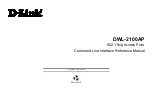
3e–527A3 Wireless Access Point – 8 Port
Chapter 3: Access Point Configuration
28
29000152-001 B
3e–527A3 Wireless Access Point – 8 Port
Chapter 3: Access Point Configuration
29000152-001 B
29
Tx Pwr Mode and Fixed Pwr Level:
The Tx Power Mode defaults to
Auto, giving the largest range of radio transmission available under nor-
mal conditions. As an option, the AP's broadcast range can be limited by
setting the Tx Power Mode to Fixed and choosing from 1-8 for Fixed Pwr
Level (1 being the shortest distance.) Finally, if you want to prevent any
radio frequency transmission, set Tx Pwr Mode to
Off
.
There are a number of advanced options included on this page as
described in the following chart:
ADVANCED OPTIONS
Beacon interval
20-1000
The time interval in milliseconds in which the
802.11 beacon is transmitted by the AP.
RTS Threshold
1-2346
The number of bytes used for the RTS/CTS
handshake boundary. When a packet size is
greater than the RTS threshold, the RTS/CTS
handshaking is performed.
DTIM
1-255
The number of beacon intervals that broadcast
and multicast traffic is buffered for a client in
power save mode.
Basic Rates
Basic Rates for 802.11b
1 and 2 Mbps
1, 2, 5.5 and 11
Mbps
The basic rates used and reported by the
AP. The highest rate specified is the rate that
the AP uses when transmitting broadcast/
multicast and management frames.
Basis Rates for 802.11g
1, 2, 5.5, 11, 6,
12, 24 Mbps
1, 2, 5.5, 11
Mbps
The basic rates used and reported by the
AP. The highest rate specified is the rate that
the AP uses when transmitting broadcast/
multicast and management frames.
Basic Rates for 802.11b/g Mixed
1, 2 Mbps
1, 2, 5.5, 11
Mbps
The basic rates used and reported by the
AP. The highest rate specified is the rate that
the AP uses when transmitting broadcast/
multicast and management frames.
Preamble
Short/Long
Preamble
Specifies whether frames are transmitted with
the Short or Long Preamble
Broadcast SSID
Enabled/
Disabled
When disabled, the AP hides the SSID in
outgoing beacon frames and stations cannot
obtain the SSID through passive scanning.
Also, when it is disabled, the AP doesn’t
send probe responses to probe requests with
unspecified SSIDs.


